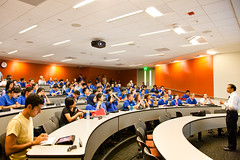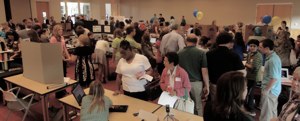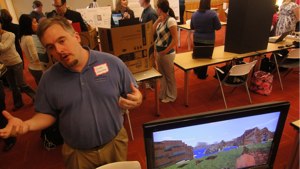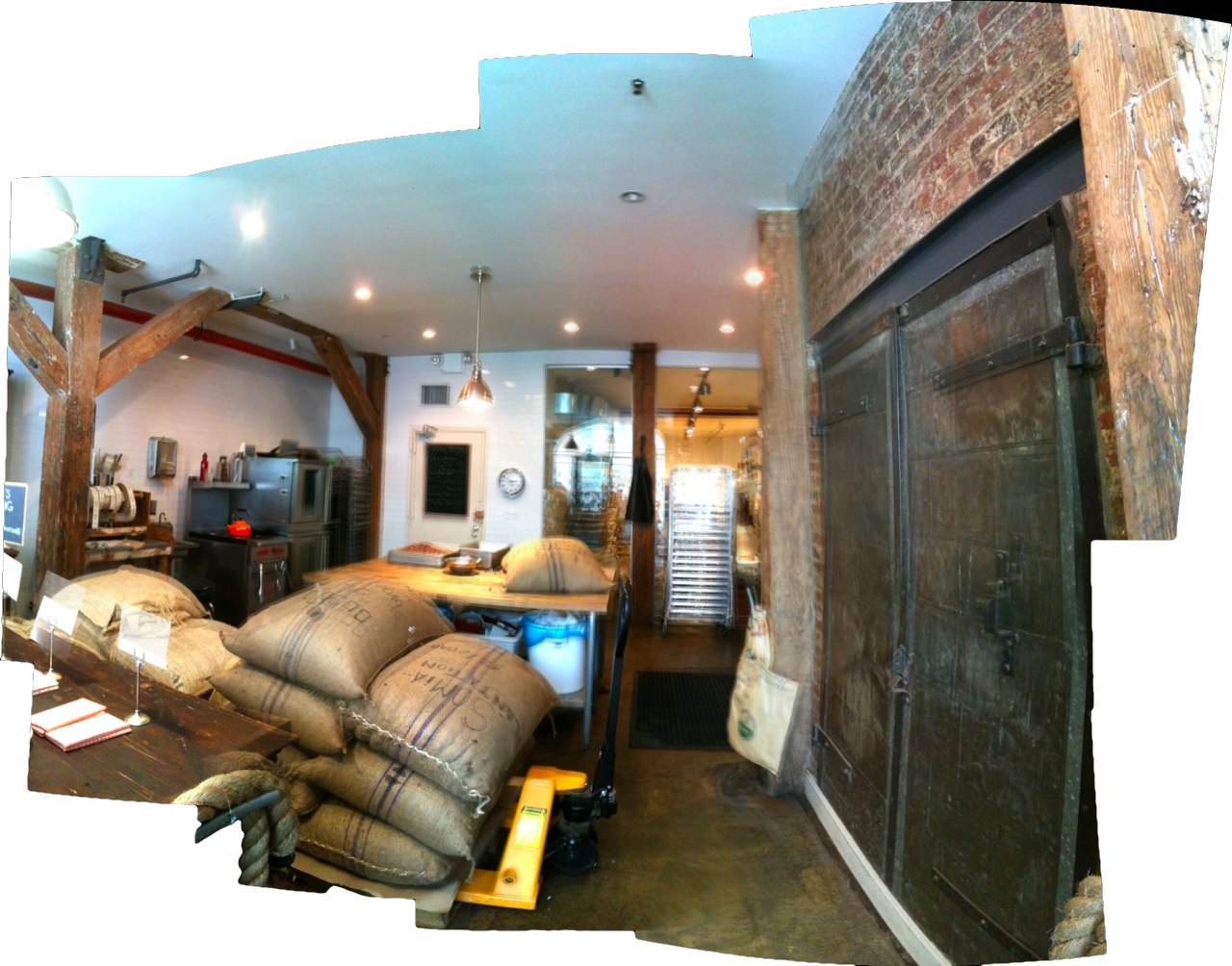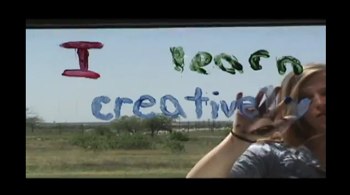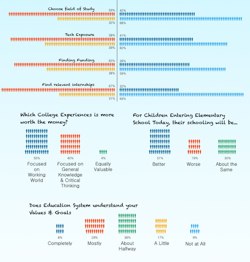I caught this guest-posted blog entry in Mashable last night, as I was taking one last look at my Flipboard on my way to bed. ..and I typed a reply to a comment that was rather more terse than it should have been and that typically is my nature. But the issues are so important to me, that I thought I would post a longer response here.
The guest author was…
Vineet Madan is Vice President of McGraw-Hill Higher Education eLabs, which works with colleges and universities, professors and students along with technology partners to develop innovative, cutting-edge digital educational tools to improve the way instructors teach and students learn.
After citing an Apple oriented blog post on the success of Reed College’s iPad pilot (here is a link to the FastCompany article), Madan posed the question, “As we wrap up the first post-iPad school year, do we know enough to make the “fad, fail, magical” call? ..and gave six reasons why his answer is, “I think so.”
“1. Tablets Are the Best Way to Show Textbooks.”
My initial response to this “reason” is, “Well yeah!” From a textbook publisher’s point of view, computers are far superior in their delivery of content when you factor in audio, video, and the ability to digitally highlight, annotate, and directly access a dictionary. This all looks great on the exhibit hall and works well in the classroom. But the mere delivery of content is an extraordinarily and dangerously limiting lens through which to seek the ideal learning device.
“2. Classrooms Are Ready for Tablets”
In my opinion, Madan did not make an effective case here, as evidenced by this comment on the Mashable blog post
..everyone knows that people will do inappropriate and not school related things on the tablet.
From the author’s argument, the reason should have read, “Tablets are ready for the classroom,” and I couldn’t agree more. But a classroom filled with curious minds and practically unrestricted access to a web of content and connections to each other is an entirely different place from what most instructors are accustomed — and restricting access to content and conversation are the antithesis of modern learning. So I would say that many, if not most, classrooms are not ready — and this is something that we need to fix very quickly.
“3. Tablets Fit Students’ Lifestyles”
The argument here seems to be that students are lazy, weak, don’t like to pay attention, and shouldn’t rely on classmates to support their learning. But that said, I agree with the reason. Our learners in, while outside the classroom, are accustomed to rich, responsive, provocative, rewarding, and forgiving information experiences that practically define pedagogy. Learners should be engaged in similar experiences in their more formal learning environments.
4. Tablets Have the Software to Be Competitive
The more bristly part of me wants to dissect the meaning of <em>competitive</em>. But instead, I will admit that I am not nearly knowledgeable enough about the vast array of apps available for iOS and Android devices. My sense is that we still have a long way to go, and simply acknowledging that an iPad will work with Blackboard misses the far more interesting question.
Can Blackboard adapt to and leverage the potentials of a mobile learning landscape?
5. Tablets Integrate With Education IT Trends
It is true that tablet computers operate well within the cloud computing environment that seems to be emerging on many college campuses and increasing in the K-12 arena. But the question remains, are those cloud environment empowering learning and merely facilitating teaching? This may seem like a senseless question, but it isn’t.
6. Tablets Are Becoming More Available
This is probably true, if the iPad is the fastest selling gadget of all times. I must admit some surprise at the number of iPads I see at conferences, especially events for school and district administrators, and the device is barely a year old. But this is a non-issue to me. It isn’t education’s job to wait for availability. If mobile information and communication technologies are the most appropriate platform for preparing the next generation for their future, then it is education’s job, and the job of the society that employs it, to assure that those ICT’s are there — regardless of budget constraints.
I was too harsh in my comment last night. I seemed to completely dismiss the textbook industry, and that was unfair and unfortunate. I believe that we need their expertise and even their incentive to help reshape teaching and learning. But our efforts must not be limited to trying to make textbooks digital. Instead, we need to learn how a digital learning environment redefines and completely reshapes the textbook in a way that reflects how today’s environment is redefining what it means to be educated.
Education, as we most often see it, is designed to teach students how to be taught. Today, being educated means having a broad and effective sense of the world, how it works, and its heritage. But perhaps even more importantly, being educated requires the learning literacy skills involved in living a learning lifestyle — having been taught how to teach yourself. Textbooks need to be platforms for generating curiosity, passion, and habitual learning.

 Big question — and it’s probably a big answer. But several days ago, Swiss educator, Vicky Loras started a conversation with Finnish School Principal Esa Kukkasniemi. You can read the entire interview
Big question — and it’s probably a big answer. But several days ago, Swiss educator, Vicky Loras started a conversation with Finnish School Principal Esa Kukkasniemi. You can read the entire interview  – Posted using Blogsy from my iPad
– Posted using Blogsy from my iPad

